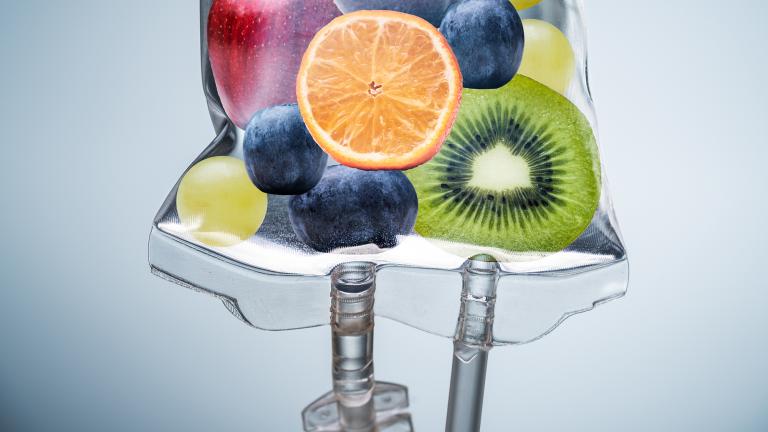
Indirect calorimetry helps narrow the gap between nutritional needs and nutritional administration in caring for cardiovascular surgical patients.
Cardiac surgeries introduce a new set of challenges when it comes to proper nutrition for patient recovery. These patients require optimal nutrition to facilitate healing and reduce post-operative complications. There are, however, unique challenges to meeting the energy needs of these surgical patients, which necessitate the use of tools such as indirect calorimetry (IC) to better assess and manage their nutritional requirements.
A significant percentage of cardiac surgical patients can have negative outcomes when pre-existing malnutrition exists before surgery.1 Therefore, identifying and treating malnutrition is a key success factor throughout the perioperative process.
This article reviews the postoperative challenges faced by clinician’s providing nutrition support therapy to cardiac surgical patients and how monitoring IC can help.
Cardiac Surgery Implications on Metabolism and Nutrition
Cardiac surgery brings several predictable physiological responses with inflammation being a major complication. Organ systems including the lungs, kidneys, and digestive tract all carry a risk of inflammation and edema in cardiac surgical patients,1 resulting in a change in caloric demand. Cardiac surgery can increase the risk of renal tubular injury and edema, as well as contribute to a decreased glomerular filtration rate. The digestive tract is also at risk for inflammation that can cause an increase in intestinal permeability and subsequent risk of bacterial translocation.1 From a pulmonary standpoint, decreased lung compliance and pulmonary vascular dysfunction are responses to inflammation that can lead to acute respiratory distress syndrome and hypoxemia.1
Postoperatively, inflammatory responses can increase energy needs, however, the primary end point for the cardiac surgical patient is to recover. This is made possible when there is an adequate supply of glucose, amino acids, and other nutrients, highlighting the importance of personalized nutrition to facilitate healing in these patients.2
Reducing Malnutrition in Cardiac Surgical Patients
It is clear that nutrition plays a critical role in the overall health of cardiac surgical patients. The risk of poor outcomes increases when patients have a nutritional imbalance going into surgery. Malnourished patients tend to have more detrimental issues related to anesthesia, hemodilution, and inflammation.1 The gut microbiome becomes affected by malnutrition after cardiac surgery. When a patient doesn’t have proper nutrition, the risk of bacterial translocation and subsequent infections are increased.1
Throughout the perioperative process, these factors all highlight the enormous role nutrition plays in cardiac patient recovery. Proper nutrition support for these patients can lead to improved outcomes such as:1
- Metabolism maintenance
- Attenuation of catabolism
- Gut integrity maintenance
- Postoperative complication reduction
- Wound healing improvement
- Adequate hydration and euglycemia
The nutritional demands of heart transplant patients are complex due to the numerous physiological changes. It is additionally difficult to determine baseline information when extracorporeal membrane oxygenation (ECMO) machines are used prior to transplant.3
After cardiac surgery, if patients are unable to receive adequate nutrition, there is an increased risk of nosocomial infection, increased length of stay, and increased risk of death from postoperative complications.2,4 While much research has been done to explore nutritional requirements, deficits, and usage in cardiac surgical patients, there are still gray areas when determining the best ways to support nutrition needs.1
Meeting Nutrition Goals with Indirect Calorimetry
Clinicians must anticipate nutritional needs and use tools available to assess and determine caloric expenditure and requirements to individualize feeding plans for each patient over time. IC continues to be the most accurate way to assess these needs, including resting energy expenditure (REE).5
IC can help close the gap between nutritional requirements at a given point in time and nutrition delivered in the intensive care unit (ICU) setting. As a continuous, bedside nutrition monitoring tool, IC measurements provide a real-time snapshot of the energy expenditure of the patient.5 Using IC means clinicians gather actual measurements rather than predicted values that can be impacted by variables due to patient status changes. Consequently, IC monitoring can help determine what energy is being used by the patient throughout the recovery process and those calories needed to meet that energy requirement.
IC measurements calculate the REE of the patient, whereas using predictive equations can only provide an estimate of REE. Predictive equations, which are based on age, height, weight, and sex, have traditionally been used, but are only accurate 40% of the time. By using IC-guided nutrition planning for these post-surgical patients, clinicians can adapt their nutrition plans to meet higher energy and protein needs that are vital in lowering mortality rates.5
When caloric needs are met, postoperative mortality is reduced, and clinical outcomes are improved.3,4 While important for all postoperative patients, maintaining proper nutrition during the pre, intra, and postoperative phases for cardiac surgical patients remains even more vital. The use of IC provides clinicians with a tool to adequately monitor energy expenditure and plan the nutritional goals.
Summary
- Cardiovascular surgical patients (including heart transplants) have extremely volatile nutritional needs.
- These needs vary due to preoperative nutritional status, the use of supportive interventions like ECMO, and due to the inflammatory responses often present in these patients.
- Malnutrition leads to multiple unwanted outcomes, while proper nutrition supports healing in postoperative patients.
- Indirect calorimetry provides real-time data, rather than predictive data, to better guide clinicians when planning nutrition support.
References
- Hill, A et al. (2018). Current Evidence about Nutrition Support in Cardiac Surgery Patients—What Do We Know? Nutrients. 10(5), 597; https://doi.org/10.3390/nu10050597.
- Finnerty, C et al. (2013). The surgically induced stress response. JPEN J Parenter Enteral Nutr. 37(5 Suppl):21S-9S. https://doi.org/10.1177/0148607113496117.
- Jomphe, V, Lands, L, & Mailhot, G. (2018). Nutritional Requirements of Lung Transplant Recipients: Challenges and Considerations. Nutrients. 10(6): 790. https://doi.org/10.3390/nu10060790.
- Alberda, C, et al. (2009). The relationship between nutritional intake and clinical outcomes in critically ill patients: results of an international multicenter observational study. Intensive Care Med. 35(10): 1728-37. https://doi.org/10.1007/s00134-009-1567-4.
- Moonen, H, Meckers, K, Zanten A. (2021). Energy expenditure and indirect calorimetry in critical illness and convalescence: current evidence and practical considerations. Journal of Intensive Care. 9:8.
© GE, 2021 – All rights reserved.
GE and the GE Monogram are trademarks of GE. Reproduction in any form is forbidden without prior written permission from GE. Nothing in this material should be used to diagnose or treat any disease or condition. Readers must consult a healthcare professional. JB17898XX








